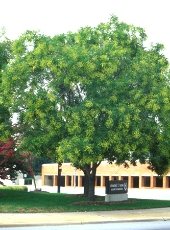Dale -
Hey, thank you for pointing me in the direction of the leaf mold thread. I read it through and will definately be collecting leaves as fall carries on here. Also, thanks for pointing me toward the composting section - that gives me plent more to look at. What a great resource you all have created here with all your combined knowledge.
Mark -
It looks like everybody is agreeing on the mulch sapping the nitrogen. Thanks for the pointer on composting it. I was actually going to ask that question next.
Ken – Thanks for all the info.
I've seen that Florida muck when working at the sugar mills around Okeechobee. Good stuff. All I can do is dream of it.
We dug a pond in the back of the property a few years back and ended up with a pretty large pile of sand and muck. I really wish we would have had the foresight to separate the layers. There was about 8 ft of muck, then grey sands and then white sand. I’m afraid the pile I am now pulling from may be a mixture of muck and sand, but I guess that’s better than pure sand.
That's as good a plan as you need to get started.
Muck soils are the result of drained bogs. All kinds of organic matter in there. Nothing wrong with adding more. Muck soils have a tendency to blow away and oxidize which will diminish the depth of the A horizon over time. Keeping that soil covered will reduce wind erosion and oxidation of the humus. Eventually you'll be left with sand. Protect that soil as best you can. You'll have little fertility issues.
Great, yeah from what I have gathered about composts and soils, the more diversity of organisms the better you are. I’m not sure I have a holistic understanding of the role of carbon and nitrogen in composting, but I feel like I am starting to at least understand the rules. Maybe I will mix some of the wood mulch into the mix, but just go easy, and I’ll compost the rest and use it at a later date. I really would like to have some wood chips in there for some long term mycelium habitat.
Here's the funny part: If you did add a whole bunch of wood chips all at once, that's ok too.
I love nature, so forgiving.
For those leaves: leaf mold. I can't say enough good about it. For me, it's an absolute must have. Try it. You'll be sold.
Just spent a few hours reading about leaf mold, don’t think it’s going to make it into this installation, but I’m definitely going to start collecting.
The horse manure gives me pause.
Good to note. It’s actually donkey poops, but I will ask my neighbor if the donkeys were treated for worms. If so, maybe composting and aging will take care of the contaminate issue.
Also, thank all of you so much for being active contributors to permaculture. I have learned so much already from the knowledge you all have shared on this thread and others.




